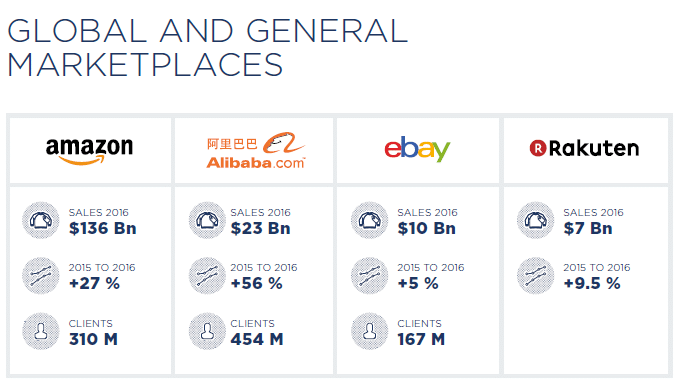Cross-border focus: E-commerce Distribution Channels
27/02/18
2'
In the first of our series of articles focused on specific topics from our new cross-border whitepaper, let’s take a look at how retailers can dip their toes into the world of cross-border e-commerce without risking it all. That’s right, in this article we focus on the different distribution channels available and how they can help retailers in their cross-border journey.

So, first thing’s first, what do we mean by distribution channels? Basically, these encompass platforms such as marketplaces, product ads on social media and search engines, comparison shopping engines, paid search, retargeting and affiliate platforms. All ways of promoting your products beyond your e-commerce site.
Marketplaces
Platforms like these can be big helps for retailers who are considering going international. Take marketplaces, for example. They allow retailers to test out certain markets, see what works and what doesn’t and adjust accordingly without all the risk associated with investing a lot of time and money into exporting their whole e-commerce site. Furthermore, there are many different kinds of marketplaces that can be tested out. Sure, global platforms such as Amazon and eBay are easily accessible as you may already be selling on them in your home country. But, trying out country specific marketplaces such as Zalando in Germany and CDiscount in France, can be hugely beneficial to learn about that particular market.

Comparison Shopping Engines
Comparison shopping engines, like Google Shopping, for exemple, will also be your friend when going cross-border. These are helpful once you’ve made the leap and internationalised your own website. Price comparison engines compare the prices of like products to show shoppers where they can buy something and for what price. Once they click on an item, the comparison engine will send them to your retail shop. This helps to increase visibility in markets where you might not be as well known.
Marketing channels: Affiliate Platforms and Retargeting
To further spread your visibility in new markets, retailers can make use of marketing channels such as affiliate platforms and retargeting. Affiliate platforms allow retailers to place ads on other websites to try and engage new customers and increase sales. Retargeting, on the other hand, has the aim, as the name might suggest, of retargeting shoppers who have visited your website and left without clicking the ‘purchase’ button. This allows retailers to remain visible to the customer, even when they’ve left the site, to entice them to return and complete the sale. Both these channels make it easier for retailers to enter a shopper’s frame of vision and keep themselves visible which leads to more sales.
Clearly, being present on more distribution channels will be beneficial for retailers starting their cross-border journeys. However, with each individual platform having its own requirements when it comes to your product catalogue, starting off on and maintaining these channels can be time-consuming and cost ineffective. That’s where Lengow comes in. Lengow allows retailers to create a source feed that can then be distributed on a bevy of distribution channels, cutting down the man hours required, and allowing for far more visibility.
Your e-commerce library
Sign up for our newsletter
By submitting this form you authorize Lengow to process your data for the purpose of sending you Lengow newsletters . You have the right to access, rectify and delete this data, to oppose its processing, to limit its use, to render it portable and to define the guidelines relating to its fate in the event of death. You can exercise these rights at any time by writing to dpo@lengow.com

Trending Posts
Marketing channels
ChatGPT Ads and advertising on GenAI Search Engines: what you need to know
Advertising on generative AI-based search engines (GenAI) marks a new era in digital marketing. After two decades dominated by traditional…
22/05/25
6'
Marketing channels
Reddit and Social Commerce: When Users Take Back Control
Before buying anything, we compare. We hesitate. And more and more often, we end up typing the product name followed…
30/06/25
8'
Marketing channels
How to Sell on TikTok in 2025: The Ultimate Guide to Success
To sell or not to sell on TikTok? That remains a question many brands ask themselves. But here’s what you…
03/02/25
7'
E-commerce Trends
E-Commerce 2025: The New Rules of Digital Retail
What’s going on in e-commerce? A lot. If 2024 was the year brands got comfortable with marketplaces, AI tools, and…
11/07/25
8'
Marketing channels
Omnichannel Strategy: The Best Examples of Successful Brands
Consumers interact with brands through multiple channels, including online, in-store, and mobile apps. More than 90% of consumers expect a…
04/04/25
5'




